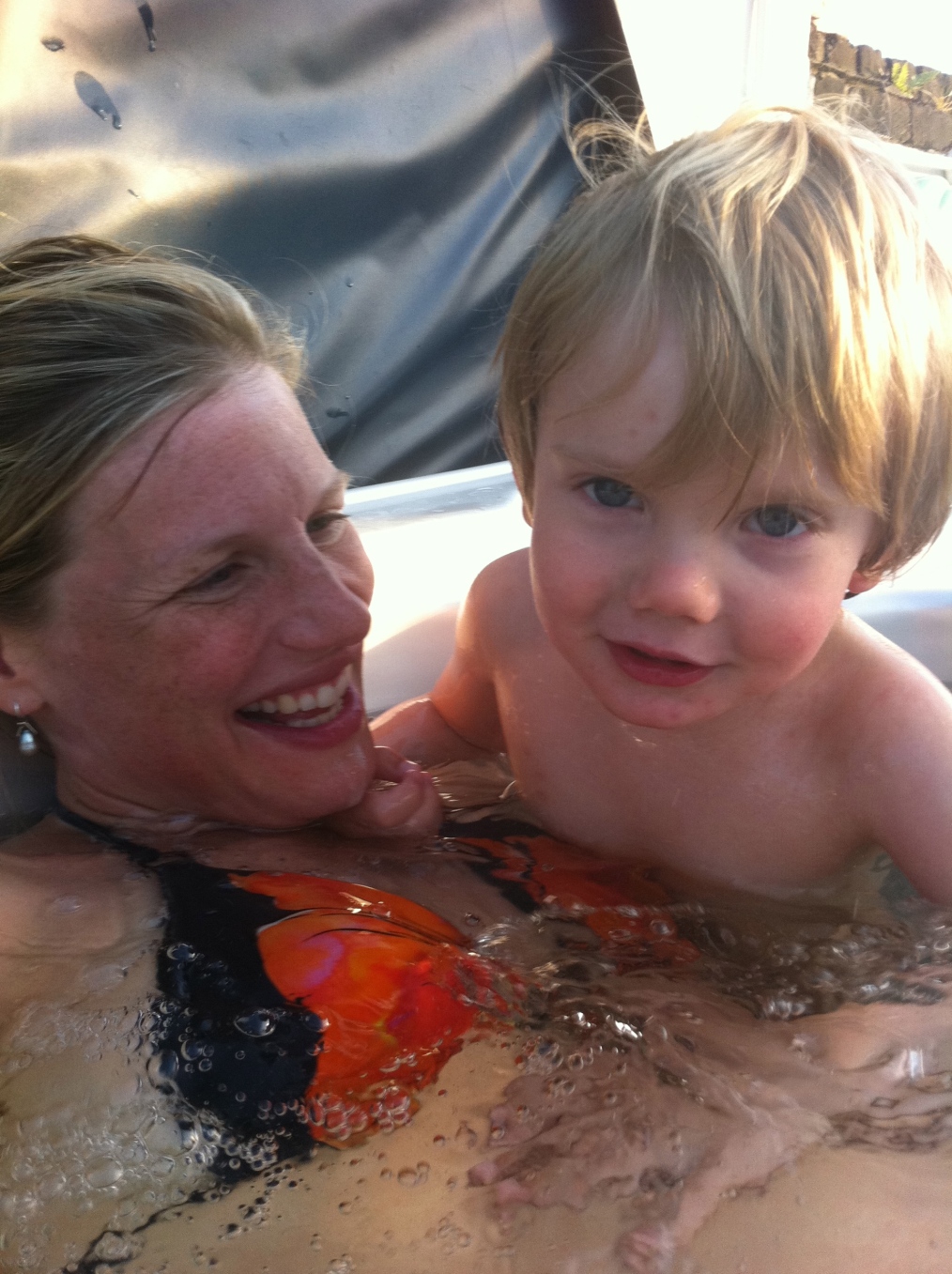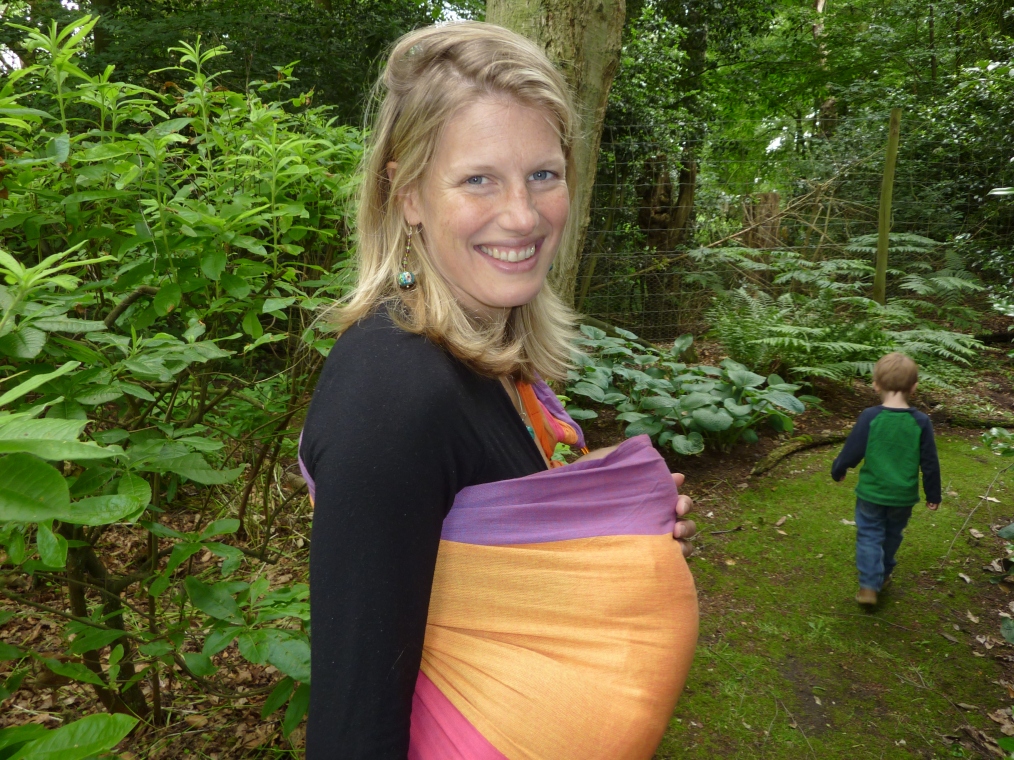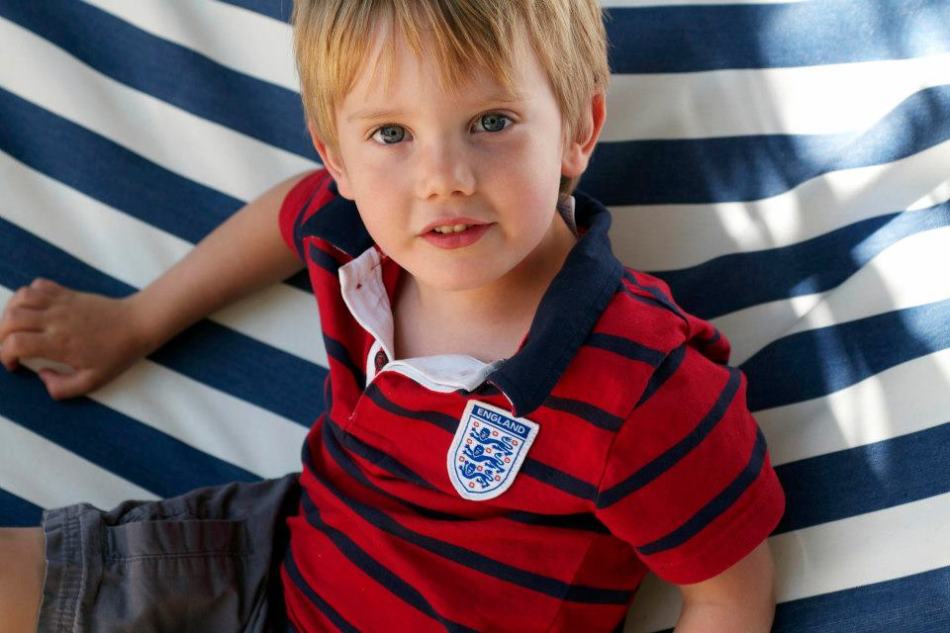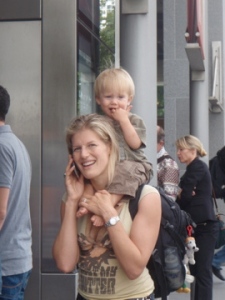Even though the focus of my writing is usually preparation for mums before they have a baby or when baby is very young, having written about feeding (in my previous blog) I thought I could not pass-by expressing, weaning and all the questions which surround using formula milk. They are topics which habour many questions and concerns. There are a million official guidelines but I found those could be as confusing as helpful, because, as we know, every baby is different.
- The more you rest, the better your milk.
With my first I didn’t listen to advise and hardly rested. Consequently, I ran out of milk by the end of the day when he was around three months old, and so had no option but to supplement with formula. With baby number two, I decided that I would rest more, thus not burning so many calories doing other things, and the result was much better milk which lasted much longer. Apparently in India, many women are not allowed to do anything for the first three months of the baby’s life apart from look after their baby. We might think this is extreme but there is a good reason for it. The more you rest at the beginning, the better. Please try and sleep when baby sleeps, and rest a lot, it will really help you produce a lot of good quality milk.
- When can I start expressing milk?
I don’t think it’s ever too early to express milk. If you have commitments which mean you have to be away from your baby during the day, or if you have a maternity nurse or willing relative to do a night feed for you, expressing milk for someone else to give, is wonderful. Some people find it more exhausting or harder than others and I welcome people to share their experiences here to help other readers. It’s one of those things that you’ll ‘get on with’ or not. It can be time consuming so I would recommend the double electronic pump, and you can buy one which straps to your body so you can use your computer while you express!

Expressing certainly gives you some freedom and for Daddy to be able to give a feed can be a lovely bonding thing between him and baby. Dad’s don’t always anticipate how isolating the first few weeks, or months, can be for him, because baby is so attached to Mum, and he’s no longer no.1 in her eyes! If he is able to get in on this feeding action, it can be wonderfully rewarding for everyone. And mums, don’t underestimate how the night feeds can take their toll, night after night, week after week. Sleep is invaluable and so if your partner is willing to do a night feed, don’t hesitate to take them up on the offer!
- Introduce a bottle early.
The good thing with expressing is that you introduce a bottle. Most babies will accept bottles willingly if given early enough. There are exceptions to this of course, and I know a few people who had to try five different types of bottle or more before baby would accept one. However, this usually only happens if you introduce a bottle a little later. If you leave it until baby knows what he likes (about 4 months) he might like the breast so much that he refuses to drink from a bottle. I had this trouble with my second. I expressed milk before he was 3 months old, and fed from a bottle without any problem. I didn’t express regularly, however, and so when I tried again, when he was about 4 and a half months old, he wouldn’t have it. It took weeks, trying every day, until eventually he took the bottle willingly. Spare yourself this agony! If you do have a bit of trouble, try feeding from a bottle when you know he’s really hungry. Babies have a very strong sense of survival and if they are hungry enough, eventually they will feed. The older they are, the more stubborn they may be.
- How early can I introduce water?
You can give your baby water as early as you want. Remember, some babies are formula fed from day one, and formula is mixed with water. It should be cooled boiled water for at least 6 months. When baby starts putting sand and dirt in his mouth every time he goes to the playground, you may think that sterilising water is a bit of a waste of time, but it’s your call. Some people always use boiled water for their baby to drink.
- Do I need to sterilise bottles?
Until your baby is at least 6 months old, yes, you do need to sterilise bottles and you must always wash them very thoroughly. I wash mine separately, using boiling water, washing up liquid and a special bottlebrush. Do you need a massive sterilising machine? No you don’t. They are easy to use and you can sterilise lots of bottles at the same time, but they range from £10 to about £60 and take up a lot of space. I was given one for my first baby, which I used until we travelled abroad. I wasn’t going to get that in my suitcase! So I looked on line for mini-sterilising machines, specifically for travel, which I realised were simply boiling water around your bottle. From that moment on, abroad or at home, I used the kettle!

My sterilising method:
Having thoroughly washed your bottle with a special bottlebrush and washing up liquid, pour boiling hot water into the bottle until the bottle is full. I pour water over the teet, as it flows into the bottle, for extra sterilization of the teet, but be careful not to burn your fingers! Sit the teet upside down in the boiling water, in the top of the bottle (so that water over-flows slightly) and pour boiling water into the up-turned teet until it is full. Let it stand for a couple of minutes. It takes a couple of minutes and the bottle is ready for use in less than five.
We travelled around the world twice with our first baby, using this method and it worked perfectly. Beware of ‘The Industry’ when it comes to all the equipment that you ‘need’. It is a topic I will cover in a future blog, but I wanted to mention it here, because so much of what you are sold just ends up taking up acres of space in your house, hardly used. I know a lot of people adore their sterilisers and if you have lots of room, then it might be the way forward for you. I, on the other hand, was happy to get rid of another appliance and get the space back on my kitchen surface!
- Am I failing if I introduce formula?
No! If you are able to breastfeed and do so exclusively for many months, you can feel a bit guilty when you introduce formula. You shouldn’t! I remember the deliberations I went through with my first son. It made me mad that I couldn’t provide enough for him, but I knew he was hungry around 3 months old, and my breast milk just wasn’t cutting it. As soon as I saw his little satisfied face, when I gave him that first bottle of formula milk, I kicked myself for not introducing it earlier.
We beat ourselves up because we want to provide the best, and everyone always says, ‘breast is best’, but formula is full of vitamins and minerals. It provides what growing babies and toddlers need in their every-day diet. They do not get the benefit of your immune system, but they get the consistency of the other ingredients which may be lacking in breast milk if your diet deteriorates. Formula fed babies have thrived for decades, from birth, and if you feed yours formula, so will yours.
- How early can I introduce formula milk?
Some women who find breastfeeding difficult, or if their milk does not come in, feed their babies formula from birth. If you are lucky enough to breastfeed but want to introduce formula, it’s when the time is right for you. I wanted to breastfeed for a year with my second child, but I am hyper mobile which means my joints dislocate easily and while I was still lactating, my body would not tighten back up and I was in a lot of pain. A combination of this and the sleeping issues which developed, meant that I introduced formula when he was 6 months old, expressing and feeding breast milk less and less until he was 8 months old, by which time dropping the breast milk was not an issue.
There is no right answer for this. They do not have a fully developed immune system of their own until they are about one year old, and so some people like to give at least one feed a day until then, if they can. The general recommendation is to keep him on the breast until baby starts weaning and is on three meals a day with protein, which happens by about 6 months (or for some, a lot earlier). There are a million reasons why this may be difficult for you, however, and do not feel guilty if you stop before then.
- Choosing the right formula milk.
When trying to choose a formula, it’s a bit of a minefield. They are all so similar! I have used Aptamil for both of my boys and continue to be very happy with it, but you must find the one which suits you and your baby.

The standard brands are all powdered cows’ milk, full of vitamins and minerals essential for baby’s growth. The comforting this about this, is when they have an off day and don’t eat much, you know they are getting added nutrition from the formula which they would not be getting from normal cow’s milk. There are organic brands out there, which are more expensive but I’m sure just as good, if not better. Over three years ago, when I was looking for a formula, they hadn’t had as much scrutiny as the bigger brands and I wanted to go with something more tried and tested. Now it may well be very different, but you’ll have to do some investigating! If you do not want to feed cows’ milk formulas because of their high lactose content, or for any other reason, there are soya and goats’ milk alternatives. I have used both:
- Soya & Goats’ Milk Formulas.
My first son developed an allergy against lactose when he was about 15 months old. I took him off cows’ milk formula and replaced with soya formula for several months, which solved the problem. However, soya based formulas are not recommended for extended periods of time[1]. For my second baby, I was more aware of the high level of lactose in cows’ milk, which the formulas contain but which is not in breast milk. Goats’ milk is a low lactose alternative, which is better for babies, but many of them do not like the stronger taste. Aware of the high lactose content in normal formula, for my second baby, I fed half Aptamil (cows’ milk formula) and half Nanny care[2] (goats’ milk formula). The half and half mix has been very successful. The goats’ milk formula also has all the added vitamins and minerals. It’s another option worth considering.

- My baby is still hungry at night!
If baby is waking more often than you’d like in the night for a feed and you are feeding milk from a bottle, it’s easy to add baby rice to their last bottle before bed, or add a couple of scoops of formula to thicken it up. Some people don’t agree with this, but I did it for both my babies and I think it gave them (or should I say, me!) at least another hour of sleep. Again, every baby is different and it’s trial and error.
If you are still exclusively breastfeeding, another option to help him sleep longer at night is to introduce formula milk as his last feed before bed. It is a lot thicker than breast milk and will fill them up for longer. I remember the first time both of mine had formula milk. I had never seen them look so deliriously content. They looked utterly full for the first time!
Many mothers are happy to wake for a feed in the night for months or even years. You have to work out what works for you. If having uninterrupted sleep is the most important thing, you can ‘train’ your baby to sleep through the night without a feed. How? Well, you do not give it to him when he wakes for it, and after a few nights he should stop crying out. It does mean going through a few very painful and rather stressful nights, though, so stock up on sleep and get in the reinforcements in preparation! Some people do not want to let their babies cry and would rather be disturbed. I have done both with my second child. To get through severe sleep deprivation I hired a fantastic night nanny[3] who helped ‘train’ him to sleep through the night when he was 6 months old. However, when your child has a cold or is teething (which is a lot in the first year!), you have to comfort them. So after the nanny had left and my baby was sick, I would comfort him in the night when he couldn’t sleep. He would then get used to the comfort again, and expect it when he was recovered, just like before the training started! For him to not wake for a bottle, I would have had to have gone through the ‘training’ all over again. I couldn’t do it. He still wakes in the night for a bottle, although now that he is a couple of days away from being one, he is starting to help himself, and that’ll happen more and more as the weeks go by. If you do sleep training early enough, baby should just go back to sleeping through the night once his sickness or teething has passed, that wasn’t the case for me, I did the ‘training’ too late. It doesn’t bother me because he still sleeps in my bed, and if he disturbs me it’s usually for less than a minute or two, and then I’m asleep again. If your baby is in his own cot and you have to get up, or you find it difficult to get back to sleep again, however, then that’s not so much fun. Some people find leaving a bottle in the cot, for him to find during the night, works. Obviously they need to be several months old to be able to do this and some babies are happier to do it than others. Whatever you decide, make sure you are not getting exhausted. If baby is waking you so that you are always tired, you must find a solution – fast. You must look after yourself because if you are over tired, you won’t have the patience to deal with baby day-in day-out, which ends up affecting baby as much as you. Don’t feel guilty. A little pain for a few nights, in the long run, might be better for you both, if exhaustion is the only alternative.
- So, how to do you know when to wean?
Listen to baby. Women worry about when to introduce food. They needn’t. The moment he’s ready, he’ll tell you that he’s hungry and ready for something more substantial. It could happen over night. One day he feeds as normal, the next he’s crying for food every few hours. It was like that for me with both my boys. You can’t help but notice, because he’ll be waking in the night more regularly too!
- What to feed as their first food.
Most people introduce baby rice (the unflavoured ones taste like cardboard!). The good thing about baby rice is that it fills them up. It’s an easy carbohydrate to add to other fruit and vegetables purees, and later protein. Be aware that early introduction of fruit is likely to give your baby a sweet tooth, however. Both of my boys do! If you want to avoid this, keep away from too much fruit as their first tastes, especially the pureed and dried fruit. You’ll find most babies love it, though! Later you’ll introduce snacks such as crisps[4], rice cakes and biscuits. There are some very good baby brands, with relatively healthy ingredients, like Goodies or Organix, available in most supermarkets. When it comes to meals, there are a million books out there full of amazing ideas and recipes. I mainly stick to Annabel Karmel’s[5] books, because she’s a mother who wants to prepare healthy food with not too much fuss. She guides you all the way from the very first tastes to full menus. If anyone else has any recommendations, please do let us know.
- Let baby ‘tell’ you what first foods he wants.
When my second son wanted more than just milk, at 5 months old, he refused what I gave him. I only offered baby rice and pureed food (and believe me I tried them all!) because that’s what my first had had and what is generally recommended. It took me 3 weeks, getting more and more frustrated and exhausted, before I gave him simple finger food, which he gobbled up hungrily. There are so many ‘guide lines’ scaring you about introducing foods too early, in case they develop allergies, that I didn’t consider offering normal food to my baby who had, until then, only drunk breast milk and had no teeth. Silly I know, and looking back I kick myself for not thinking outside the box, but I only realised how big the problem was when I was utterly exhausted, by which point I was incapable of lateral thought!
Many people swear by ‘baby-led weaning’. I haven’t read about it, but the essence is, from what people tell me, do not puree any food and just let them eat whatever normal food they can. The babies get used to eating finger foods, feeding themselves and normal food textures. My second baby would only eat normal food to begin with, flatly refusing puree. I managed to introduce purees a little later. I did not adopt ‘baby-led weaning’, my baby forced me to let him eat that way! My mantra is ‘let baby lead’ and ‘listen to baby’.
I have to admit that I like feeding my babies pureed food, because I think that they get a greater variety of vitamins, minerals and general nutritional goodness that way. (I cooked all my own pureed food for baby number one, but have resorted a lot more to Ella’s Kitchen[6] sachets for number two. They are brilliant!) Before teeth arrive I find baby led weaning a bit limiting and rather frustrating! You can only offer them things that ‘melt’ in the mouth and on the protein side that’s not much. Carrot sticks are great for teething, but I always steamed mine until they practically fell apart. For me a combination works brilliantly. I welcome people’s comments about their experiences with ‘baby-led weaning’. I have heard wonderful success stories, and I hope people will share theirs here, for women who are interested in following this approach.
Don’t worry if your baby doesn’t eat much some days. When they are teething or sick, in particular, they often don’t feel like much. We all have off days when we just want comfort food. For babies, this is usually milk. If, on occasion, that’s all they fancy, don’t worry, especially when you are first introducing food. It won’t last forever, and for now, as long as he’s got a smile on his face and you keep on offering alternatives, so that he has it when he feels like it, baby will be fine. If baby is not happy, he’ll tell you! In the meantime, give him what he wants, as long as it’s not a lolly pop or sweeties!

Many people put their babies to sleep by 7pm so that they can enjoy their evenings, baby-free, but suffer from very early wake-up calls! So many times I’ve heard people say, “but it doesn’t make any difference if I put him to sleep two hours later, he still wakes at 6am”.
I like to think of sleeping routines like jet-lag. If you suddenly moved to America, would you continue to let your baby wake at 6.30am UK time? Of course not! Your whole schedule would change, and after about a week your baby would be happy with the new schedule. If you put your baby is sleep later, eventually he will change, but in order for it to be 100% successful you usually have to change meal times too. Again, think of it like jet-lag. If you were to move to America, your whole schedule would change.
My second son has been waking every morning, like clockwork, at 6.30am. To change this, I have been allowing him to nap for a couple of hours during the day, then putting him to bed at 9.30pm, but this hasn’t been enough. I have now had to change his feeding schedule as well, otherwise his body is wanting to do a poo about 12 hours after his dinner and he’s hungry for breakfast by 7am. So I’m letting him snack about 5pm, leaving his main meal until about 7pm. We’re only day two, but so far so good! It is new territory for me, because my first son has nearly always been on our schedule. We usually have family meals together and he has always slept until about 8.30am. However, I’m quietly confident in changing my second son’s schedule and if anyone is interested, do ask for an update in a week or so, and I’ll let you know how it’s going!
It can be more convenient to feed, bath and get children to bed by 7am, otherwise you can feel like your ‘working day’ goes on endlessly and it is nice to have a bit of chilled adult time at the end of the day with your partner. However, it’s also nice to hang-out as a family after Daddy gets home from work, have a family meal, maybe watch a film together and get to lie-in until 8am the next morning. You can’t have it both ways, unless you are one of these unbelievably lucky people whose children sleep for 14 hours in a night. Like with everything, when it comes to children, you have to decide what works for you, and then create a schedule accordingly. Baby will adjust and fit in, they are amazingly adaptable, we adults are less so, and that’s the tricky bit!
[2] ‘Nanny care Goat Milk Nutrition’ made in New Zealand by Dairy Goad Co-operative (N.Z.) Ltd, Hamilton. UK Helpline: 0800 328 5826. Retail £18.95 from ‘Portobello Wholefoods’, (266 Portobello Road, London W10 5TY). It’s about double the price of normal formula from a supermarket.
[4] Pom-Bear are a good gluten free brand, with no artificial colours, flavours or preservatives.
[5] www.annabelkarmel.com/
[6] Ella’s Kitchen organic baby foods. 100% organic. No “other stuff”.













































